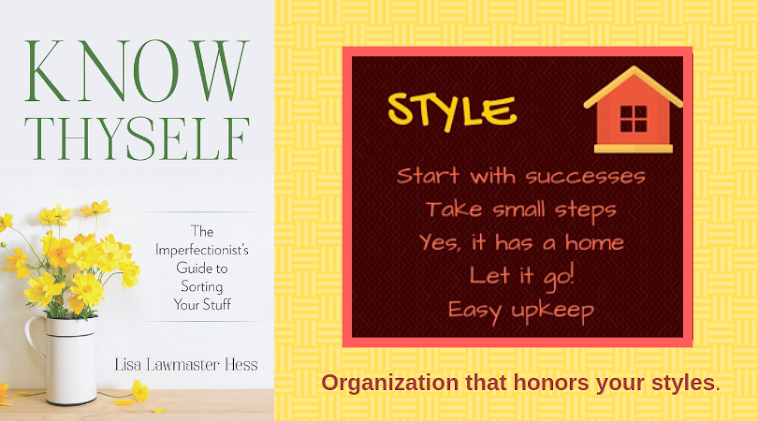Excellent start.
But, while building systems that work with our styles is effective, it's only part of the process. We also need to keep those systems going and, as long as the habits at the root of our styles continue, we can sometimes get in our own way.
Take me, for example. As the not-always-so- proud owner of a drop and run organizational style, I've built my systems around this tendency. When I use them, they work very well.
But, when I get tired or stressed or overwhelmed?
You guessed it. I drop and run.
Identifying the habits that get us into trouble is the first step to replacing them with better ones. Here are a few things we can do to keep clutter-creating habits in line.
- Zoom in on a habit. Which habit gets you into trouble most often? The habit may be a style itself (like my dropping and running) or it may simply be connected to a personal or organizational style (like the sheer quantity of items collected by someone with an I love stuff personal style). Zoom in on one of these to target. Then...
- Catch yourself in the act. By targeting the style, you're more likely to catch yourself and intervene early. Ready to drop that item instead of putting it away? Catch yourself and put it where it belongs. Ready to add one more thing to an already burgeoning collection? Think about what spot it will fill and where it will go before you get it home.
- Use self-talk. Find a reminder that works and say it to yourself every time that clutter-creating habit you're targeting surfaces. For me, it's "Don't put it down, put it away." A cram and jammer might remind herself to store it, not cram it and someone with the I know I put it somewhere organizational style might ask himself "Where does this belong?" Every time we use our words to remind ourselves what we should do instead, we cement a good habit instead.
Pairing our day-to-day actions with our organizational systems can not only take us from cluttered to clear. It can also make sure we stay that way.















